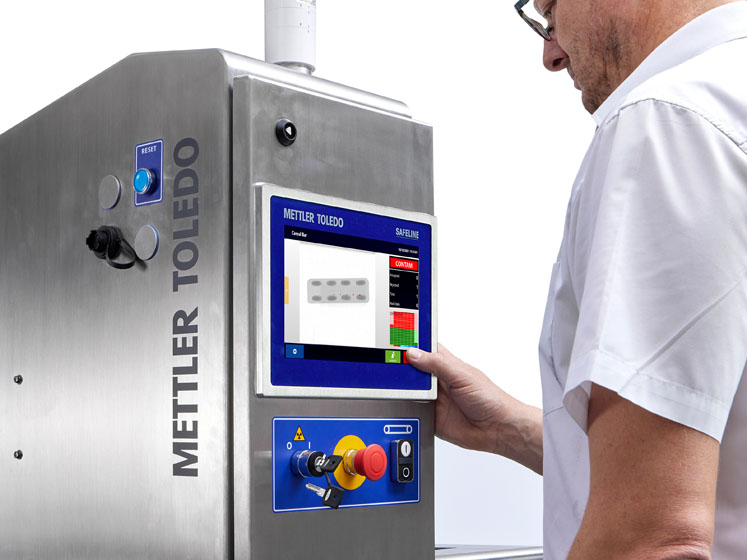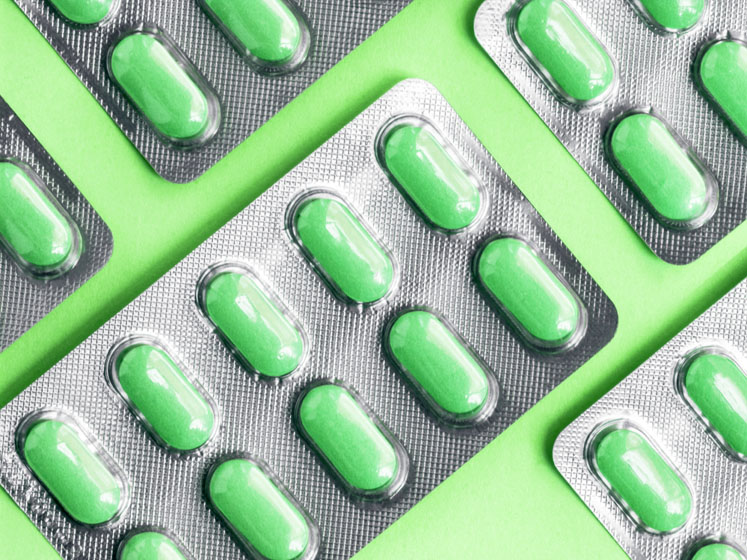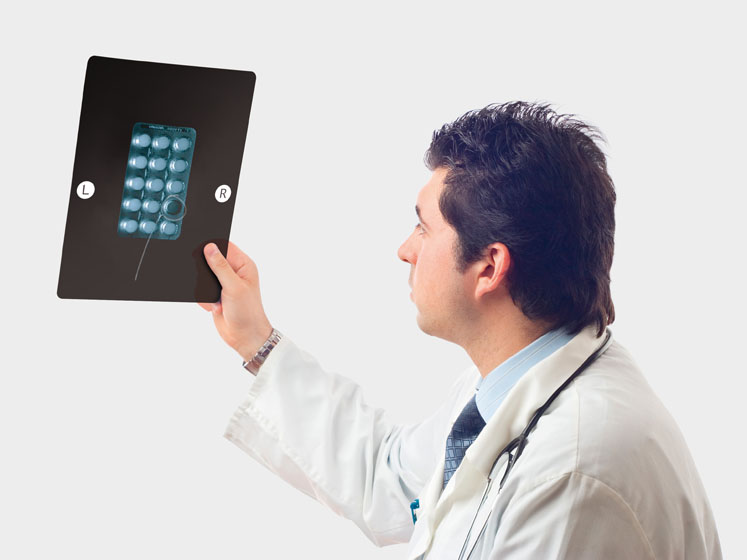We are all aware that the pharmaceutical industry operates within a highly regulated environment in which upholding product safety and quality is paramount. Manufacturers invest significant resources in validation processes to meet regulatory requirements.
One approach to completing quality assurance (QA) checks in the pharmaceutical sector is product inspection. Whereas many manufacturers rely on systems such as vision-based systems and metal detection, the use of X-ray inspection is gaining recognition as an additional QA tool.
To understand the benefits of X-ray inspection, we must first look at its functionalities, then address the misconceptions.
More than contaminant detection
The primary function of X-ray inspection is the detection of contaminants and foreign bodies such as metal, glass, mineral stone and high-density plastics.
Simultaneously, X-ray systems perform valuable inline quality checks, including counting components, identifying missing or broken products, monitoring fill levels, checking for damaged packaging and detecting agglomerates such as flavour and powder lumps.
Addressing the misconceptions
Pharmaceutical manufacturers often express concerns about the potential impact of X-ray inspection on their products. However, studies have consistently shown that the quantity and energy of X-rays used during product inspection are minimal … and the duration of exposure is extremely brief.

For example, tablets undergoing X-ray inspection are typically exposed to low-energy X-rays for less than 0.2 seconds.
In comparison, the dose of background radiation that pharmaceutical products receive while on the shelf, in transit or during consumer ownership is significantly higher than the levels delivered by an end-of-production line X-ray inspection system.
The US Food and Drug Administration (FDA) acknowledges that the dose levels received by objects passing through an X-ray inspection system are lower than the dose of background radiation received in a single day.
Furthermore, and perhaps most crucially, the FDA asserts that there is no known danger associated with consuming medicines that have undergone X-ray inspection.1
Scientific studies have also been conducted to evaluate the effects of X-ray inspection on pharmaceutical products.
For instance, researchers at the Department of Drug Delivery and Nano Pharmaceutics, Graduate School of Pharmaceutical Sciences, Nagoya City University in Japan, conducted a study on the effect of X-rays on the pharmaceutical quality of drug tablets.
The study exposed acetaminophen, loxoprofen and mefenamic acid tablets to varying X-ray doses (0.34 mGy to 300 Gy). These doses were significantly higher than those delivered by typical X-ray inspection systems. The results of formulation tests revealed that exposure to X-rays did not affect the pharmaceutical quality of the drug tablets.
The exposed samples exhibited similar characteristics in dissolution, disintegration and hardness tests as control samples that were not exposed to X-rays. Additionally, when combined with accelerated temperature and humidity tests equivalent to 6 months of exposure, X-ray exposure did not affect the pharmaceutical quality of the samples.
This study concluded that X-ray exposure at levels much higher than those encountered during product inspection had no significant effect on the efficacy or other properties of the drug tablets.2
Another study, conducted by Robert Bosch Packaging Technology and the PHAST Society for Pharmaceutical Quality Standards, exposed model pharmaceutical substances (tramadol HCl and nifedipine) to X-ray radiation for a period of 2 hours.
This extended exposure time was significantly longer than the fraction of a second typically used during industrial X-ray inspection. However, no degradation was observed in either substance after the 2-hour exposure period.3

These scientific studies collectively demonstrate that X-ray inspection at the levels used in pharmaceutical manufacturing does not significantly affect the quality or efficacy of the products.
Although not all formulations have been studied, the low doses of radiation involved in X-ray inspection systems are well below the levels of naturally occurring background radiation and do not pose a risk to product integrity.
Dispelling the concern
Despite the availability of such comprehensive studies, pharmaceutical manufacturers often prefer to conduct their own tests. This cautious approach can be attributed to the stringent regulatory environment in which they operate.
Governing bodies worldwide have established guidelines and requirements for pharmaceutical manufacturing, including good manufacturing practice (GMP) and good distribution practice (GDP), and manufacturers need to comply with these regulations while maintaining the highest level of quality assurance.
Some companies may have concerns that are specific to their products or processes or that they believe require additional scrutiny. These concerns may stem from the complexity of the formulation, sensitivity to radiation or unique packaging requirements.
Conducting their own tests allows manufacturers to address these specific concerns and gain confidence in the integrity of their products.
However, it is important to recognise that the extensive scientific studies and regulatory guidelines pertaining to X-ray inspection provide a strong foundation for manufacturers to trust this method.
The studies have consistently demonstrated the safety and efficacy of X-ray inspection … and regulatory bodies acknowledge its effectiveness in terms of ensuring product quality and safety.
Utilising the technology of X-ray inspection systems, manufacturers will see significant benefits on their production lines. It eliminates the need for redundant testing, which can be costly and time-consuming, allowing manufacturers to streamline their processes and focus on other critical aspects of production.
By trusting in the proven capabilities of X-ray inspection systems, manufacturers can benefit from the expertise and experience of the producers of this equipment who have a deep understanding of the technology and its application in the pharmaceutical industry.
Expanding the scope of X-ray inspection
So, where should X-ray inspection technology be used within the production process and what are its benefits? Traditionally, X-ray inspection in the pharmaceutical industry has been primarily used for specific applications, such as verifying the presence of tablets or needles.
However, its potential extends far beyond these limited applications. When employed at the end of the production line, X-ray inspection becomes one of the most versatile and comprehensive tools available to manufacturers.
Unlike other methods, X-ray inspection has the capability to inspect a diverse range of products, regardless of their shape or packaging.
One of the significant advantages of X-ray inspection is its ability to penetrate various materials, including metals, glass, high-density plastics and rubber. This capability enables the detection of dense foreign bodies that may contaminate pharmaceutical products.
Metal fragments, glass shards or other foreign objects that could compromise product quality and safety can be reliably identified and removed from the production line, preventing them from reaching consumers/patients.
In addition to contaminant detection, as mentioned at the start of this article, X-ray inspection allows for other critical quality checks. It can verify the completeness and integrity of packaged products and detect missing or damaged items within the packaging.
This level of scrutiny is essential in the pharmaceutical industry, wherein missing components or damaged products can have severe consequences for end users.
For instance, checking the presence of needles in glucose monitoring systems and verifying their functionality is crucial; a faulty device could have fatal implications for diabetic patients.

By detecting and preventing the distribution of defective or compromised products, X-ray inspection plays a crucial role in terms of upholding a company’s brand image and reputation.
One of the notable advantages of X-ray inspection is its versatility. Unlike other methods that may be limited to specific product types or packaging formats, X-ray inspection can be applied to a wide range of pharmaceutical products, regardless of their shape, size or packaging materials.
It is particularly beneficial for pharmaceutical manufacturers who commonly use metalised film or aluminium-backed blisters as packaging methods. X-ray inspection systems can effectively inspect products contained within these packaging materials and check their integrity and quality.
By leveraging X-ray inspection technology at the end of the production line, pharmaceutical manufacturers can enhance their quality control processes and minimise the risk of contaminated or defective products reaching the marketplace.
The comprehensive nature of X-ray inspection, coupled with its ability to inspect a variety of products and packaging formats, makes it an invaluable tool to uphold product safety and maintain consumer trust.
Compliance and traceability
Beyond its ability to detect defects, X-ray inspection systems also contribute to compliance with regulations and provide traceability. The data generated by X-ray inspection systems can facilitate compliance with regulatory requirements.
Manufacturers can access comprehensive quality data and export it as needed, providing transparency and accountability. X-ray inspection systems enable the creation of individual images of each product, complete with date and time stamps, providing information to support due diligence that quality checks have been completed.
The information is easily retrievable, thereby facilitating easy tracking. Additionally, the reporting capabilities of X-ray inspection systems allow for detailed shift and production reports, including the number of rejected items.
This level of documentation aids the validation process and ensures that approved settings remain unchanged during production, minimising the risk of errors or deviations.
Conclusion
X-ray inspection plays a crucial role in completing a wide range of quality assurance checks without significantly impacting the efficacy or physical properties of pharmaceutical products.
The technology offers comprehensive contaminant detection, quality checks, compliance facilitation and traceability, all of which contribute to brand protection and consumer safety.
By embracing X-ray inspection as an additional tool in their quality assurance processes, pharmaceutical manufacturers can elevate their standards, mitigate risks and have confidence that high quality products are entering the market.
The time has come for the industry to recognise the immense value that X-ray inspection brings and embrace its potential for a safer and more reliable pharmaceutical supply chain.
References
- www.fda.gov/radiation-emitting-products/security-systems/frequently-asked-questions-cabinet-x-ray-systems.
- K. Uehara, et al., “Effect of X-Ray Exposure on the Pharmaceutical Quality of Drug Tablets Using X-Ray Inspection Equipment,” Drug Development and Industrial Pharmacy 41(6), 953–958 (2015).
- M. Vogt, et al., “Influence of X-Ray Radiation as PAT Method on the Model Substances Tramadol HCl and Nifedipine Compared to the Influence of UV-Vis Radiation,” TechnoPharm 2(3), 1–12 (2012).
